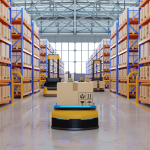Manhattan Associates’ new agentic AI strategy isn’t just a concept—it’s already operational. With intelligent agents now handling dynamic labor assignments and order fulfillment, the company is redefining what adaptive supply chain systems look like in practice.
AI Agents Shift From Forecasting to Execution
At its 2025 keynote, Manhattan Associates introduced agentic AI as a core operational tool. CTO Sanjeev Siotia detailed how software agents, powered by large language models, are already handling task coordination, answering user queries, and adjusting workflows in real time. Unlike static rule-based automation, these agents adapt to changing warehouse conditions such as order spikes and staffing gaps.
Built on a microservices, API-first architecture, the agents are designed for modular deployment and integration. Manhattan also launched Agent Foundry, a development toolkit allowing customers to create and deploy their own AI agents. The company is working with Google to ensure cross-platform compatibility.
Unification Enables Autonomy
Manhattan’s push into AI builds on its strategy of platform unification. More than two dozen customers are adopting its single-codebase execution suite, where standardized workflows allow agents to act across distribution, transportation, and fulfillment.
SVP Brian Kinsella highlighted a new application, Enterprise Promise and Fulfill, which uses live inventory data and real-time lead times to orchestrate order allocation across networks, without manual oversight.
Duluth Trading Company offered a case in point. As part of its $60 million automated fulfillment center in Georgia, Duluth integrated Manhattan’s platform to improve order accuracy and labor efficiency. SVP AJ Sutera emphasized that execution hinged as much on role clarity and retraining as on software.
Why This Signals a Broader AI Inflection Point
Agentic AI represents a shift from predictive insight to autonomous execution. That promises faster decisions and fewer handoffs, especially in high-variability environments. But as software takes on more responsibility, questions grow around transparency, accountability, and exception handling.
Companies adopting these tools will need controls that keep AI agents aligned with business logic, particularly in edge cases. As automation spreads, so too must oversight.







